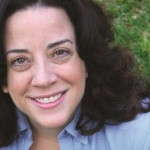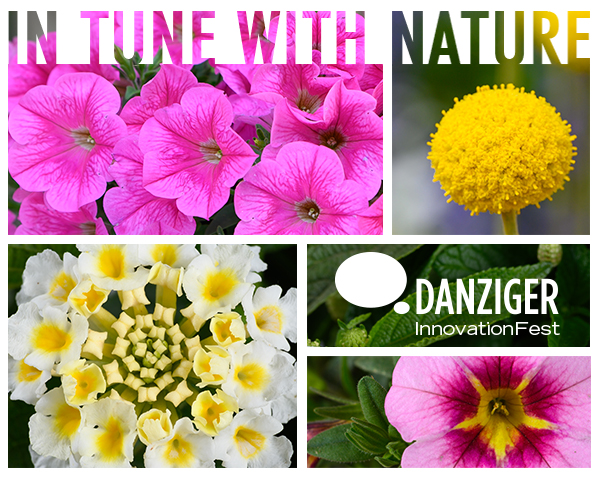What Is It Like To Attend California Spring Trials?

Proven Winners hosted its trial at Chaminade Resort & Spa in 2015.
Most garden retailers haven’t attended the industry’s arguably most spectacular event, California Spring Trials (CAST), where all the new and improved plants are put on dazzling display.
The reason so few have had the chance to attend is there in the name: Spring. Generally speaking, the season is kicking off and all hands are needed in the store. Unless your a larger retailer, you simply can’t spare the time.
So I thought I’d try to bring you a small taste of what a week attending the Spring Trials is like.
CAST, the event’s acronym, is just shy of a week, running from Saturday through to Thursday. It’s not held in one location, but at various greenhouses, vineyards, and other venues.
There’s no limit on the number of stops, and these locations generally fall between the two boundaries L.A. and San Francisco. Actually, until last year, the southern border is north of L.A. in Ventura, and the northern border is south of San Francisco among several small towns. This year, EuroAmerican decided it much preferred hosting its trials at its own location, near San Diego.
There’s no official pattern you are expected to follow. Breeders prefer that you book a time slot, so they can make sure their resources can accommodate you, but otherwise it’s an open system. You stop where you want, and in whichever order you want. You can fly into San Francisco and drive down to EuroAmerican, flying home from San Diego, or vice versa.
For first timers, that can be intimidating. You’ll be relying on GPS, because just about every location is far off the beaten track. That means you need to build in time to get lost.
Even we veterens get lost. Last year, our GPS took Allan Armitage, Laura Drotleff, and I to a road that ran along the back of Danziger’s greenhouses, with no availble entry or easy turn around. It took us a good 20 to 30 minutes to find the correct road and then the greenhouse. Naturally, it was the last stop of our day, so we squeaked in after everyone thought they were done working for the day.
Breakfast rooms at the various hotels along the way are a good way to make connections. Most of the people in these small town hotels will be on the tour, either heading south or north. This is where you hear about the most spectacular plants, and learn what gets people excited. Last year, as we worked our way north, we heard about Proven Winners’ calibrachoa ‘Holy Moly’ and Sakata’s celosia ‘Dragon’s Breath’ long before we got to see the plants in person.
Now to the trials themselves. In general, there are four main types of locations.
Four CAST Locations Styles
1. Gorgeous Settings For Beautiful Plants. Some of the stops are in spectacular venues, like Proven Winners, which was held at Chaminade Resort & Spa the past few years (but is being held this week at Kirigin Cellars winery), and HGTV HOME Plants and Dümmen Orange, held at Edna Valley Winery. Rolling California hills spill away from the spectacular floral displays.
Ball Horticulture hosts their CAST displays on their own grounds, but these grounds are extensive and beautiful on their own.
Another benefit of the more beautiful venues is that you get more one-on-one attention. You make appointments to arrive at a specific time, and you get your own personal escort, pointing out what the new breeding accomplished.
2. Home Base Advantage. Like Ball, Sakata, Syngenta, and Benary all host CAST at their own locations, although these stops are primarily inside their greenhouses. Another similarity is you again receive an assigned tour guide.
When a breeding company can hold its trial at its home base, it tends to take advantage of having staff on hand. Most breeders fly staff out a two to three weeks in advance to set up. But if you already have offices, there is no expensive travel costs to discourage a longer set up time.
So the home-base stops tend to be a little more… well, more.
Take Benary, for instance. Last year, it created a Chill Lounge at the back of the greenhouse, a blacked out space with black lights, and lots of glow-in-the-dark furniture, toys, and alcoholic drinks. It also had a more serious-minded display throughout: it had compiled consumer data on attitudes and posted those insights throughout all the displays.
3. Breeders At The Multiplex. Other stops are mega stops, with lots of breeders sharing space. Those are more like going to a shopping mall, and you wonder from breeder to breeder. There’s a lot to see, and you have to make sure you give yourself plenty of time.
HortCouture, Florist Holland B.V., and PP&L are located at this kind of stop, and they do what they can to attract camera wielding attendees. The displays are saturated in color and packed with clever ideas for displaying plants. Which is why you’ll always see their displays in a photo gallery of CAST highlights.
These flamboyant displays makes the more most subdued breeders look like tired trade show booths, sometimes with a bored rep trying to avoid eye contact. Most breeders at these multiplex-type locations, however, are passionate plant people with smaller budgets who put their plants front and center and are eager to talk about them.
4. Often Overlooked Small Stops. If you’re trying to get through CAST in a shorter time frame, you’re likely to visit only the bigger venues, whether that’s the multiplex-type stops or large breeders like Ball and Syngenta. But these kind of tourists miss some of the best gems of CAST.
Small stops like Golden State Bulb offer a plant nerd the opportunity to visit with the actual breeder of the plants you’re seeing. If they are experimenting on something, you’re likely to be pulled into a back area to see how the real trials are coming along. That’s heady stuff for anyone who loves plants, which means just about anyone who works in our industry.
If you ever feel like you can leave your store for a full week in spring, you’ll want to take a trip to California and see for yourself what plant breeders can do to celebrate their plants.










